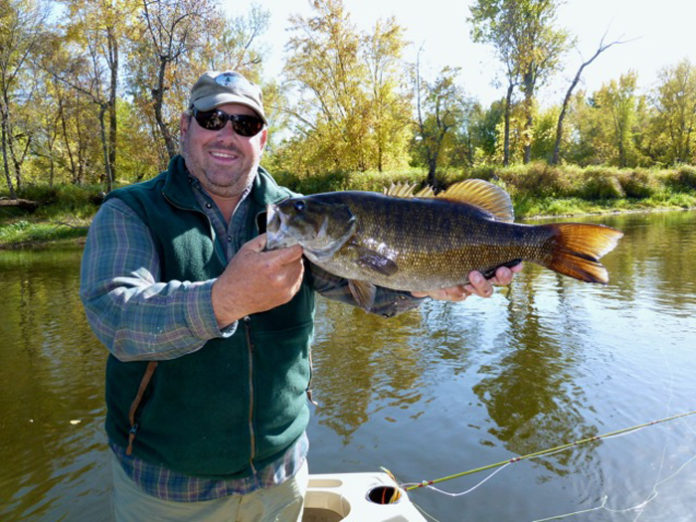[Interview starts at 38:40]
There are few things more fun in fly fishing than catching bluegills with a popper or nymph. For the most part, once you find them, it’s easy and un-challenging fishing. But if you want to up your game and chase trophy bluegills, the kind that will put a big bend in a 3-weight rod, you need special techniques. This week, Orvis-endorsed guide Kip Vieth–of Wildwood Float Trips in Monticello, Minnesota–shares his passion for big bluegills, and his special techniques for catching them, even in the heat of summer.
In the Fly Box, we answer the following questions from listeners:
- I had a big brown trout chase my fly right after a big tumble of branches rolled down the river on top of him. Is this common?
- What can I do with some grouse feathers I obtained?
- Does a 7½-foot knotless leader have the same level tippet length as a 9- or 12-footer, or is the tippet length proportional?
- I started tying my own leaders but had a blood knot break. Should I go back to knotless leaders?
- Would it be a good idea to tie smaller streamers with a shank and a trailing stinger as opposed to using a longer-shank hook? I have heard that long-shank hooks don’t hold fish as well.
- What are some good rules for keeping your distance on crowded trout streams?
- I always hook my fly onto one of my guides, but recently I had a guide break when I was pulling the rod apart. Is that a bad practice, and am I weakening the guides by doing this?
- When someone says they are fishing a 9-foot or 12-foot leader, does that length include the tippet?
- I had a Davy knot break on heavy tippet. Is the Davy not weaker in heavier materials?
- How do I keep the fly line from pulling my leader back inside the guides when making short casts?
If you can’t see the Play arrow above, Click Here.

Credit: Source link































